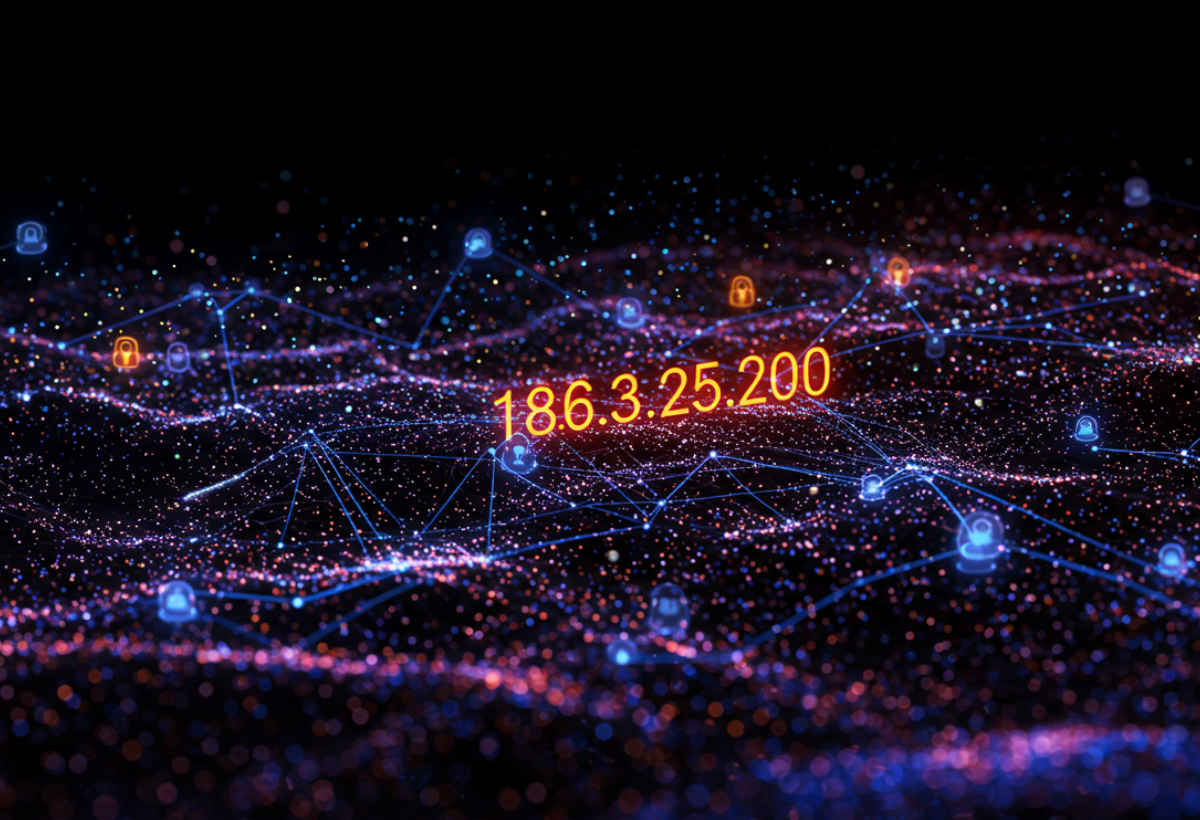
In today’s hyper-connected digital world, understanding IP addresses isn’t just for techies — it’s for everyone who values cybersecurity, privacy, and the smooth functioning of online systems. One IP address that’s been stirring curiosity is 185.63.2253.200. Whether you stumbled upon it in your network logs, firewall settings, or email header, you might be wondering: what is this IP, and is it even valid?
This article dives deep into everything you need to know about 185.63.2253.200, from its structure and validity to its cybersecurity implications and the tools you can use to analyze or block it. Backed by expert insights and tools like IPinfo.io, AbuseIPDB, Whois Lookup, and Spamhaus Blocklist, you’ll leave this guide more confident and informed about dealing with unusual IP addresses.
What Exactly is an IP Address Like 185.63.2253.200?
An Internet Protocol (IP) address is like a digital home address for your device. It helps route data from one computer to another, ensuring emails, website content, and even online games reach the correct destination. In simple terms, if you’re online, you’re using an IP address.
185.63.2253.200 might look like a standard IPv4 address, but as we’ll explore, it breaks crucial formatting rules. IP addresses follow strict numerical guidelines to remain valid and operational. Understanding how 185.63.2253.200 fits — or doesn’t — into these rules is critical for effective network troubleshooting and cybersecurity risk assessment.
What is an IP Address?
An IP address is a unique numerical label assigned to each device connected to a computer network. These addresses serve two principal functions: host or network identification and location addressing. Essentially, they help computers find each other and share information.
There are two main types of IP addresses: IPv4 and IPv6. While IPv4 is still widely used, IPv6 was introduced to combat address exhaustion and support the growing number of connected devices.
Types of IP Addresses IPv4
addresses use a 32-bit format, represented as four octets separated by dots, such as 192.168.1.1. Each octet ranges from 0 to 255, making up a total of roughly 4.3 billion unique addresses. Despite that, the explosion of internet-connected devices led to a shortage, prompting the development of IPv6.
IPv6 addresses use a 128-bit system and are represented by a complex string of alphanumeric characters. This type supports virtually unlimited addresses and is gradually replacing IPv4 across global infrastructures.
Understanding the Structure of 185.63.2253.200 (IPv4)
A traditional IPv4 address like 185.63.225.200 is divided into four parts, or octets, ranging between 0 and 255. Each octet plays a specific role in defining the network ID and the host ID, which together determine where and to whom the data is delivered.
However, 185.63.2253.200 contains an invalid octet — 2253. This violates the basic formatting rule for IPv4 addresses. Despite looking legitimate, this subtle anomaly turns the entire address into an invalid IP address, which can have cybersecurity and diagnostic implications.
Is 185.63.2253.200 a Valid IP Address?
Short answer: No. The third octet in the address is 2253, which is beyond the valid range of 0–255. As a result, 185.63.2253.200 does not conform to the IPv4 standard, making it an invalid IP format.
That said, people might still encounter such addresses due to human error, misconfigured network settings, or even malicious intent. Recognizing these anomalies can protect you from IP spoofing, DNS misconfiguration, and other potential threats.
Verdict: Invalid IP Address
After analyzing the octets, it’s clear that 185.63.2253.200 fails IPv4 validation. A corrected version might be 185.63.225.200 or 185.63.253.200 — both within the valid range. Invalid IPs often appear during network scans, incorrect manual configurations, or cybersecurity threat vectors.
You can use tools like IPinfo.io, Whois Lookup, and WhatIsMyIP.com to verify IP format and ownership. Always double-check such addresses before engaging with them.
Possible Explanations for 185.63.2253.200
- Typographical Error: The most common cause is simple human error — a mistaken digit that turns a valid address into an invalid one.
- Misconfigured Networks: Sometimes, incorrect DNS or IP entries can populate system logs or analytics reports with invalid addresses.
- Cyber Deception: Malicious bots and hackers may use incorrectly formatted IPs to obfuscate their origin or conduct stealth operations like IP spoofing or DDoS attacks.
What Can You Learn From Knowing 185.63.2253.200?
Even though it’s invalid, the IP 185.63.2253.200 provides a valuable learning opportunity. By dissecting it, you get hands-on exposure to IP formatting, host-network separation, and common pitfalls in network configuration.
Additionally, it reinforces the importance of using trusted IP address lookup tools to verify entries, especially when performing tasks related to network troubleshooting or malicious IP detection.
Where Might You Encounter 185.63.2253.200?
You might come across this IP in various digital environments:
- Firewall Logs: Malformed or spoofed IPs often show up in log files.
- Email Headers: Spammers might attempt to use such addresses to obscure their identity.
- Website Analytics: Analytics tools sometimes register odd IP entries, especially if bots are scraping your content.
- Ping or Traceroute Tools: Attempting to ping or trace an invalid IP like 185.63.2253.200 can reveal connectivity errors or misconfigurations.
Important Considerations Regarding IP Addresses Like 185.63.2253.200
Knowing how to classify and interpret IPs is crucial for personal and organizational security. IPs may be static or dynamic — static ones remain constant while dynamic ones change with each new session.
Reverse DNS lookup can provide the domain name associated with an IP. However, this only works with valid IPs, so 185.63.2253.200 won’t yield useful results. Still, similar addresses can expose vulnerabilities or security loopholes.
Security Implications of Invalid IPs Invalid IP addresses like 185.63.2253.200 are sometimes associated with spoofed IP addresses used in cyberattacks, including brute-force attacks and DDoS vectors. Recognizing and filtering out such entries is vital for network security best practices.
These IPs can also appear in blacklists maintained by entities like AbuseIPDB, Spamhaus, or Shodan.io. Regularly checking logs and monitoring these databases is crucial for identifying threats early.
How to Verify and Check IP Addresses for Security
Use reliable tools to vet unfamiliar IPs:
- Whois Lookup: Identify ownership and registration details.
- AbuseIPDB and Spamhaus Blocklist: Discover whether the IP has been reported for spam or abuse.
- Shodan.io: Find open ports and exposed devices.
- VirusTotal: Scan for known malware associations.
Proactively investigating IP addresses helps maintain digital hygiene and preempt security breaches.
Preventing IP Errors and Cybersecurity Risks For IT administrators, it’s vital to:
- Format IPs correctly.
- Implement geofencing and IP filtering.
- Enable MFA (Multi-Factor Authentication).
- Monitor firewall activity for anomalies.
For general users:
- Never click unfamiliar IP links.
- Use antivirus tools.
- Run checks via IP lookup sites.
- Stay informed with cybersecurity best practices.
Frequently Asked Questions (FAQ)
- Can an IP address have a number greater than 255?
- No. Each octet in an IPv4 address must fall between 0–255.
- What is IP spoofing?
- It’s when hackers forge an IP address to mask their identity and bypass security filters.
- What tools help detect malicious IPs?
- AbuseIPDB, VirusTotal, Spamhaus Blocklist, and Shodan.io are excellent starting points.
- What does ‘Reverse DNS Lookup’ do?
- It maps an IP address back to a hostname, offering insights into the device or service associated with the IP.
- Can I track location using an IP?
- Yes, tools like IPinfo.io offer approximate geolocation from IP based on registry data.
Final Thoughts
While 185.63.2253.200 is not a valid IPv4 address, understanding its structure opens the door to deeper knowledge about Internet Protocol, cybersecurity risks, and network troubleshooting. From identifying typographical IP errors to scanning for threats in firewall logs, these insights equip you with tools to stay secure.
In a world where threats evolve rapidly, being vigilant about IP activity is more important than ever. Use the power of trusted tools and network security best practices to protect your online presence. Stay curious, stay informed — and let even an invalid IP like 185.63.2253.200 be your lesson in digital mastery.
More Read Like:- Discovering checwifeswap






